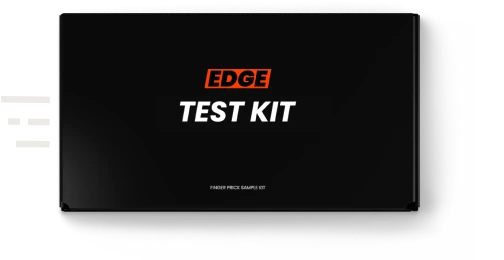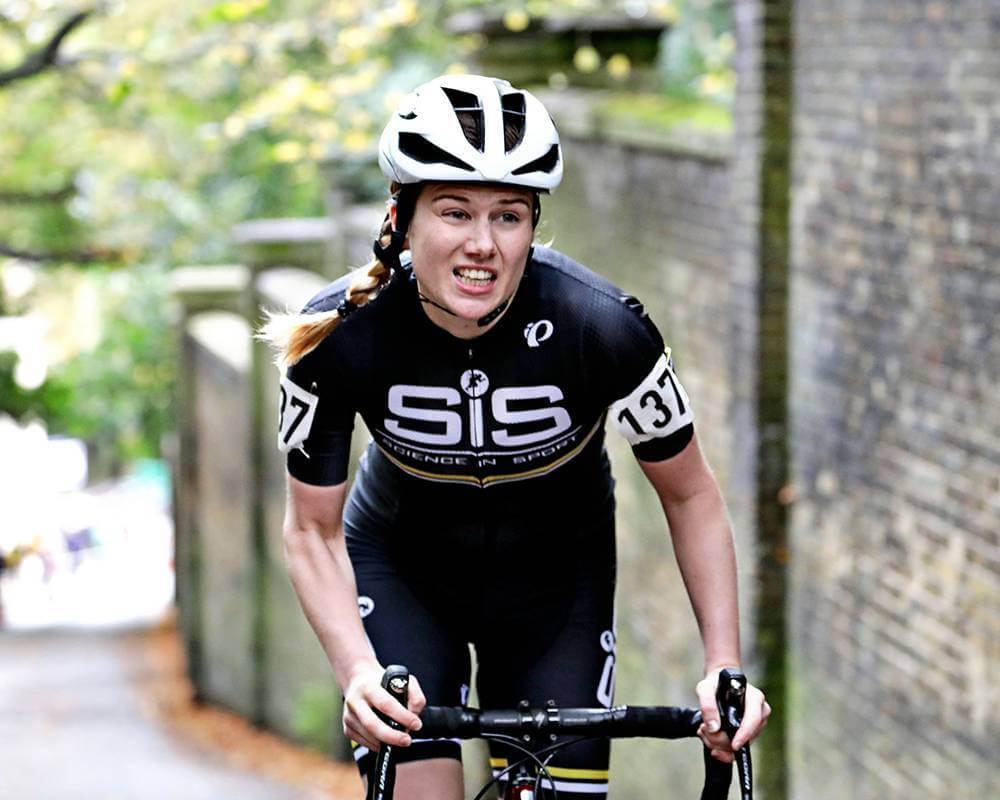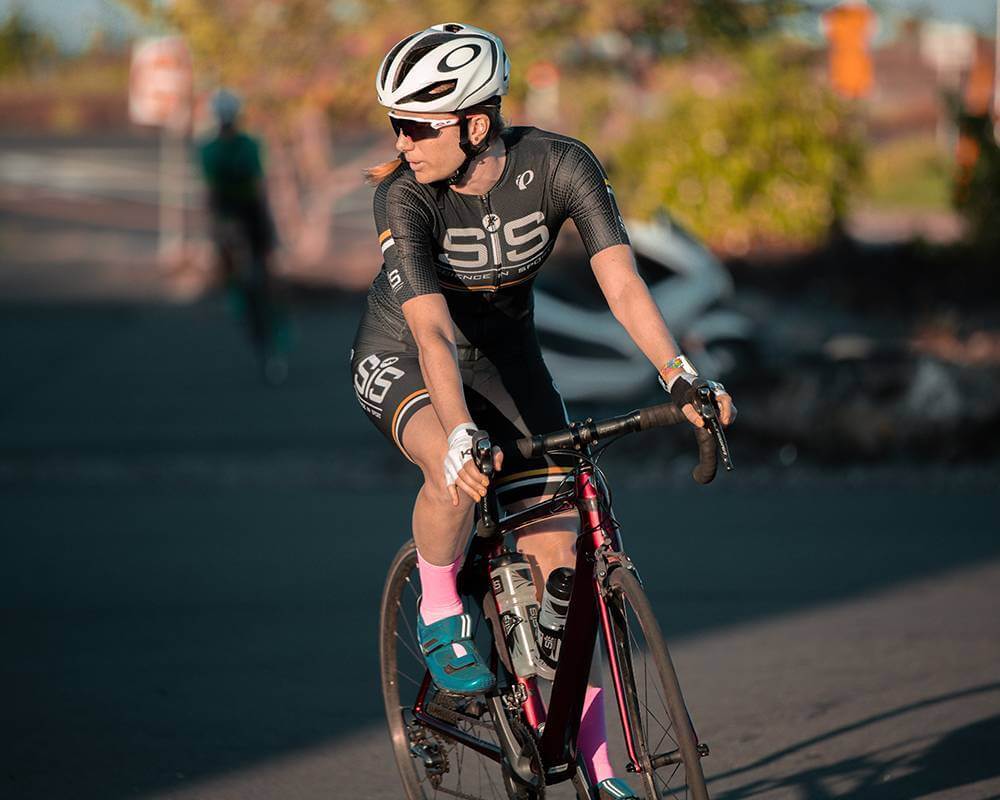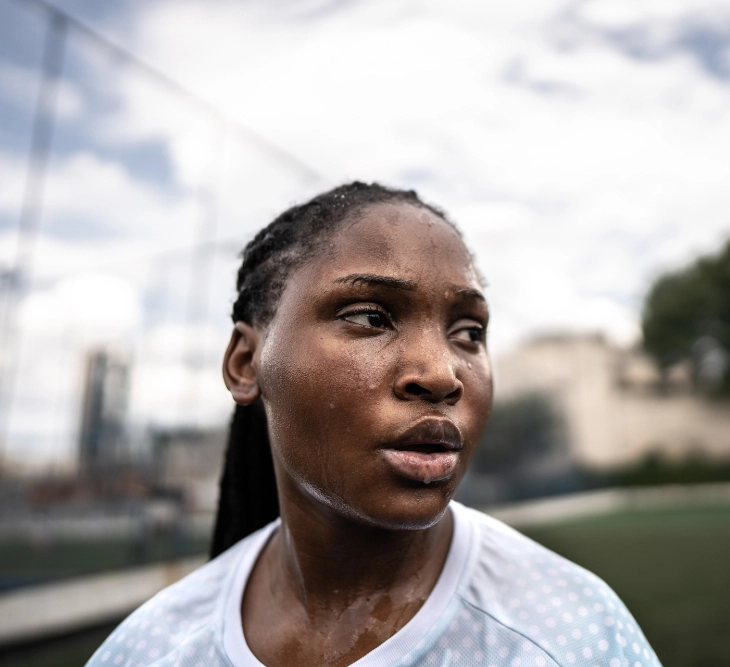
Nutrition
Sodium’s Impact on Sports Performance
1 min read
Salt, or rather sodium, plays a major role in hydration and muscle function. There are lots of myths around hydration and diet but one thing is clear: learning about, measuring and optimising this component of our diet is the next big nutritional marginal gain.
Joe Beer reveals some new data, a missed research gem and some improved recommendations…
What is sodium?
So what Is Sodium?
Well, without getting too technical, sodium is a key mineral (aka electrolyte) in your body that controls functions like blood pressure, blood volume and osmotic equilibrium. Losing sodium through sweat can affect sports performance, so replenishing it with a balanced diet or supplements is important.
Okay, that last one is a bit technical so let's go with it enables the correct size of your body’s various cells to be regulated. In total, you have about 70-90 grams of sodium stored in your body, 60% in fluids plus the remaining 40% in your skeleton.
Why is sodium Important for athletes?
Sodium helps to maintain fluid balance, nerve function, and muscle performance. Here’s why it's important for athletes to maintain adequate sodium levels:
- Fluid Balance: Sodium helps regulate the amount of water in and around cells. During exercise, especially in hot conditions, athletes lose sodium through sweat. If sodium levels drop too low, it can lead to dehydration, possibly cramps, and a condition called hyponatremia, which can be dangerous.
- Nerve Function: Sodium is essential for nerve impulse transmission. It allows nerves to send signals to muscles, enabling movement. Without adequate sodium, these signals can be disrupted, leading to muscle weakness or even failure to contract properly.
- Muscle Function: Sodium works together with other electrolytes like potassium to facilitate muscle contraction. Proper sodium levels help prevent cramps and ensure that muscles function efficiently during intense physical activity.
- Blood Pressure Regulation: Sodium helps maintain proper blood volume and pressure. This is important for athletes because stable blood pressure ensures that muscles and organs receive an adequate supply of oxygen and nutrients during exercise.
For athletes, maintaining the right balance of sodium is vital to optimise performance, avoid cramps or stomach issues, and ensure overall safety during prolonged or intense physical activity.
Sodium in an athlete’s diet
We lose most of our sodium through sweat loss as we exercise.
Think about it, you will notice sweating within around 10-15 minutes of starting exercise.
The greater the effort, the faster the sweating kicks in and so many athletes can flood the floor indoors or look like a sweaty mess when training in hot weather outdoors. It’s common to record sweat rates of over 1.5L per hour, and very highly trained athletes competing in the heat can exceed 3L per hour!
The bigger the athlete and their power output the greater the sweat output. Most athletes can deal with a 2-4% loss of body fluids (e.g. 2L to maybe 3L), however, any more and many normal bodily functions start to slow down or change leading to a loss of performance and ultimately can start to put your body into survival mode.
Insufficient fluid intake during prolonged exercise leads to dehydration, characterised by a disproportionate loss of water compared to sodium. This imbalance elevates blood sodium levels as blood volume decreases, a condition known as hypernatremia. This can impair performance by increasing core temperature and inducing fatigue. While dehydration is a concern when water access is limited, excessive fluid consumption poses a different risk.
Exercise-associated hyponatremia (EAH) occurs when athletes overhydrate, diluting blood sodium levels to dangerously low levels. Over-drinking pure water in a misguided attempt to prevent dehydration, cramping, or heat stroke can lead to this potentially fatal condition. As water rushes into cells, severe symptoms such as vomiting, seizures, pulmonary and cerebral oedema can arise. Mild cases present with headaches, fatigue, and nausea.
Maintaining sodium levels in your diet can help with:
-
Electrolyte Balance
-
Hydration
-
Performance
-
Recovery
There is a lot of misinformation about sodium. Many people you ask will say it’s bad and should be avoided. But the reality is a different story.
Unfortunately, as you are reading this article and hearing the health messages abound in our information age - you know: not too much alcohol, don’t smoke or vape, watch your UV levels and oh yes, salt is bad. The latter is not true for most athletes as you sweat regularly, you lose sodium, plus you empty and fill up glycogen (which has 3x its weight in water). This constant flushing of the body with fluids and eating/drinking foodstuffs with water in them mean you really do move yourself apart from Mr and Mrs Average who the “reduce your salt” message is targeted at.
However, salt can still be thrown out of an athlete's kitchen based on the overzealous salt is bad mindset which leads to low intakes, poor rehydration and many an athlete running to the bathroom far more often than they should. Salt is bad and mineral water by the bucket is good right? Wrong!
How much sodium do athletes need?
The average adult needs about 1,500 to 2,300 milligrams of sodium per day, according to dietary guidelines. However, athletes may require much more due to the sodium lost through sweat during intense physical activity.
Like quite a few areas of health and fitness, the moment you start training on a regular basis (6-12h/week) the rules are different for you.
As a middle-ground estimate, athletes can lose anywhere from 500 to 1,500 milligrams of sodium per litre of sweat. The more an athlete sweats, the more sodium they need to replace. For example, a long-distance runner or a triathlete competing in hot weather could need significantly more sodium than someone doing a short workout in a cool environment.
Some athletes may benefit from a personalised approach, such as blood testing and sweat testing, to determine their specific sodium needs. This is especially important for endurance athletes who engage in prolonged exercise.
A groundbreaking tool, the S1 (Flowbio, UK) allows athletes and coaches to see actual sweating quantity and sodium measurement in exercise, training and endurance events.
This is game-changing, as it identifies the outputs of sodium and therefore individual hydration plans, calculations of sodium in products used versus losses and if an athlete needs to change post-exercise sodium and fluid content rehydration habits.
For example, after a session, the S1 device informs the athlete that, for example, they should drink 1.13L of fluid and consume 1,131 mg of sodium, minus what they have already consumed during exercise. Smart.
Importantly, this starts a process of education which then empowers you: with data, you can make better decisions. Seeing what sodium an athlete actually loses and the actual sweat rate is an eye-opener. Questions must then be asked about the consumption of sodium in the diet, what is in the sports nutrition products they consume and are athletes oblivious to this key hydration cycle: lose, analyse, replace?
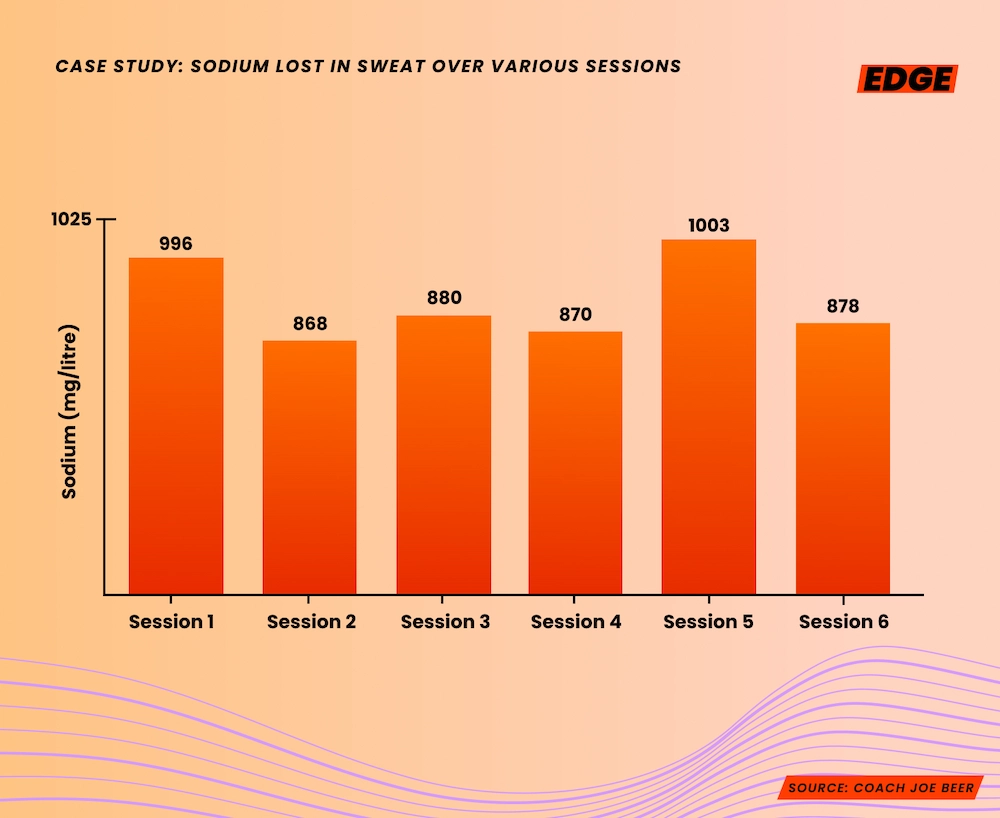
Most popular sports’ drinks and gels contain some quantity of sodium, but as you can see from this list, the quantity varies considerably between manufacturers:
SIS GO = 0mg Sodium
PAS Energy gel = 182mg/serving
GU Roctane = 180mg/serving
PowerGels = 200mg/serving
Maurten 320 = 500 mg/serving
So having this information can really help you make good nutrition choices for training and race day.
You might be surprised to know that the salty taste buds in your mouth can turn-up, or turn down how salty your food tastes based on your current sodium levels. Salt appetite is tightly regulated by complex neuroendocrine mechanisms. You can experiment with this at home using ready-salted crisps and a pint of beer (alcohol suppresses the release of a hormone called Aldosterone that causes your brain to crave more salt!).
Are There Negatives To Sodium?
What if athletes have too much salt? Well, there are health issues associated with excessive sodium intake such as high blood pressure, kidney disease, cancer and other ills of excess. However, I tend to see athletes being salt-phobic and uneducated about just how much they need and to better monitor what they drink to hydrate in exercise and rehydrate afterwards.
My coaching observations include over-urination due to too little sodium intake - sometimes multiple times in training and racing, post-event salt binges due to under-consuming sodium in training sessions and events (probably >2-3h in duration), being sick and or experiencing low blood pressure soon after these longer exercise sessions and huge eye-opening realisations when actual sodium losses are calculated compared to what the athlete thinks.
Underconsumption and bad timing are more of an issue with active athletes. The inactive and poor diet, “normal humans” in the population are not my target group or with whom I connect - sadly that’s over to the NHS to try to fight against the might of the processed food and bottled beverages industries.
Remember, you cannot drink to an exact schedule, e.g. 900ml every hour, because you do not sweat in exact amounts across all exercise and competition scenarios. Drink to thirst but also watch how much you crave salt, and if you always use plain water perhaps it's time to look at fluid replacement drinks with additional sodium.
Tips to being Salt Savvy
-
HABITS
Look at your hydration habits: do you drink to a strict regime or listen to your thirst and adapt to changes around you? A training diary should be used to note “needed to wee four times on my run” or “eat 3 packets of salt and vinegar crisps after a ride” or “drank little and got a headache afterwards”.
-
TRY IT
Don’t wait to have salt binges after long hot sweaty sessions, look at products that have sodium and try to hit a range of around (and this is a conservative guess) 400-800mg per hour. If you are doing several hours of exercise track if this targeted sodium intake can reduce the need for the toilet in training or post-exercise salt binges.
-
TRACK IT
Check how much salt you have during home cooking and in foods you eat across the day. The target is not zero sodium or eating to excess. There is a middle ground and the timing and how much you use sodium can be a very useful tracking metric in your training diary and event feedback. Remember more training means more sweat loss and sodium loss too.
-
BE SAFE
If you have any family issues around high blood pressure, any medications that affect hydration or concerns about health occurrences that may be related to extreme sodium levels (such as fainting after long events) seek professional help.
Did you hear the one about 26-minutes faster?
So you’ve read this far, and the reward: a humdinger of a study on the benefits sodium supplementation during endurance exercise can have: Juan Del Coso and co-workers[1] looked at middle-distance half Ironman athletes and the effects of supplementing sodium to their race day fuelling.
Their 2015 study published in the Scandinavian Journal of Medicine and Science in Sports showed a significantly faster triathlon race time when adding a total of 2500mg sodium, and some other electrolytes, spaced out over the ~5hour event.
It was a double-blind study, so neither the experimenters or the athletes themselves knew if they had sodium tablets or a placebo. However, being an in-the-field study everyday events did not run perfectly, for example, 5 subjects from each of the groups (placebo or electrolyte recipients) dropped out and also it was subject to how well the athletes pushed themselves and fed themselves.
However, despite the study's shortcomings, those having extra sodium completed the event, on average, 26 minutes faster than those who did not receive extra sodium.
Similarly, Hamouti and co-workers[2] also studied a ‘water and sodium versus water-only’ scenario in cyclists back in 2012. After 2 hours of solid riding the cyclists then did a time trial, bottom line: adding sodium to the drink used by the cyclists allowed them to ride 20 watts harder - a significant and cheap advantage. Such gains are quite expensive to buy yourself in cycling technology or clothing - we are talking hundreds if not thousands of pounds.
Final thoughts
In exercise, we have moved from just the message “drink to thirst” to now fuelling with carbohydrates to extend our abilities to go for longer, and faster. Sodium, added in electrolyte drinks, powders and drop-in hydration lozenges, is now truly being seen as the next level in sports and exercise hydration improvement.
There is no one target, one product or one lesson that applies to all athletes. Some are already salt savvy, liberal with it on their food and have been using salt supplements in long events for some years. However, many are still ignorant of their sodium losses, shy away from salt and make hydration mistakes that make their exercise and endurance challenges far harder than they need to be. Some even put their health at risk.
Advances like the S1 sensor, talking about salt as an ergogenic aid and not a bad thing is only going to help us personalise hydration through education and discussion of this brave new world of embracing sodium.
Blood test for
Runners
Male & Female Tests
sports doctor review
Results in 2 working days
Flexible subscription
-
Del Cosco, J. Et al (2015) Effects of oral salt supplementation on physical performance during a half-ironman: A randomized controlled trial. Scan. J Med Sci Sports. doi: 10.1111/sms.12427
-
Hamouti, N et al (2012) Ingestion of sodium plus water improves cardiovascular function and performance during dehydrating cycling in the heat. Scan. J Med Sci Sports. Jun; 24(3):507-18.
Read Next...
Get expert advice to help you improve your results.
Go to our knowledge centerGet 10% off your first order
Want regular tips on how to make the most of your results? Join our newsletter and we'll give you 10% off your order!
